Noto Shika Korogaki: A Satoyama Delicacy—Dried Persimmons Crafted With Care, One Fruit at a Time.

Refined Sweetness and Beautiful Amber Hue, Reminiscent of a Satoyama Sunset.
Produced mainly in Hakui County, Shika Town, “Noto Shika Korogaki” is one of the few dried persimmons certified under the “Geographical Indication (GI) Protection System” of the Ministry of Agriculture, Forestry, and Fisheries.
The beautiful amber hue, soft texture, and refined sweetness make “Noto Shika Korogaki” particularly charming. It is also well-known for its presence in local specialties such as “Korogaki Soft Cream” and “Korogaki Yokan” at the Roadside Station “Korogaki no Sato Shika.”
The name “Korogaki” comes from the Japanese word “koro,” meaning “to roll” or “turn,” which refers to the practice of gently rotating the persimmons during the drying process to ensure they are fully exposed to the sun.
“Noto Shika Korogaki” is a processed product made from the original Ishikawa “Saishou” variety selectively bred in Shika Town, Hakui County. “Saishou” is an astringent persimmon variety used exclusively for “Noto Shika Korogaki” (hereinafter referred to as “Korogaki”) and has a high sugar content of approximately 20%. Through processing, it is transformed into an exquisitely delicious product.
“Processing after the fruit is harvested is absolutely crucial,” says Nariaki Yoshino, manager of the “JA Shika Korogaki Division.” In the past, many people in the region engaged in persimmon production as a sideline during the agricultural off-season. However, he explains, “Since each fruit is processed by hand, it’s no longer something that can be done while holding a regular job. No matter how skilled someone is, a single misstep in the processing can undo a year’s worth of effort. That’s how difficult it is.”
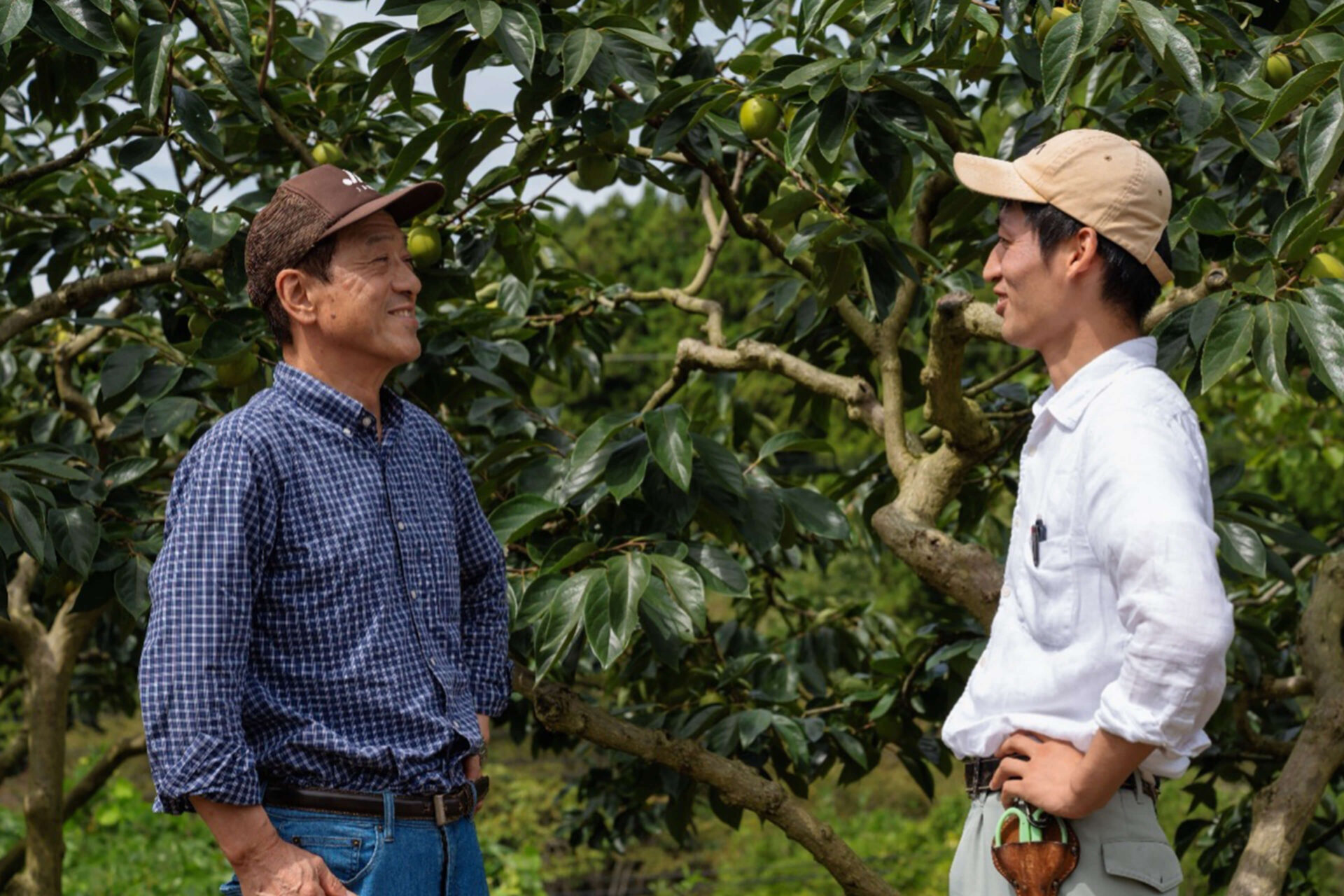
Because it is a delicate variety susceptible to disease, it must be cultivated with the utmost care.
“Saishou” is said to be somewhat susceptible to disease, with considerable variability between individual trees, making cultivation a constant challenge for growers.
Preparation for fruit growth begins with winter pruning. Careful pruning is essential to ensure that the trees produce fruit efficiently. From mid-May to early June, growers perform bud thinning, selectively removing excess buds to optimize growth.
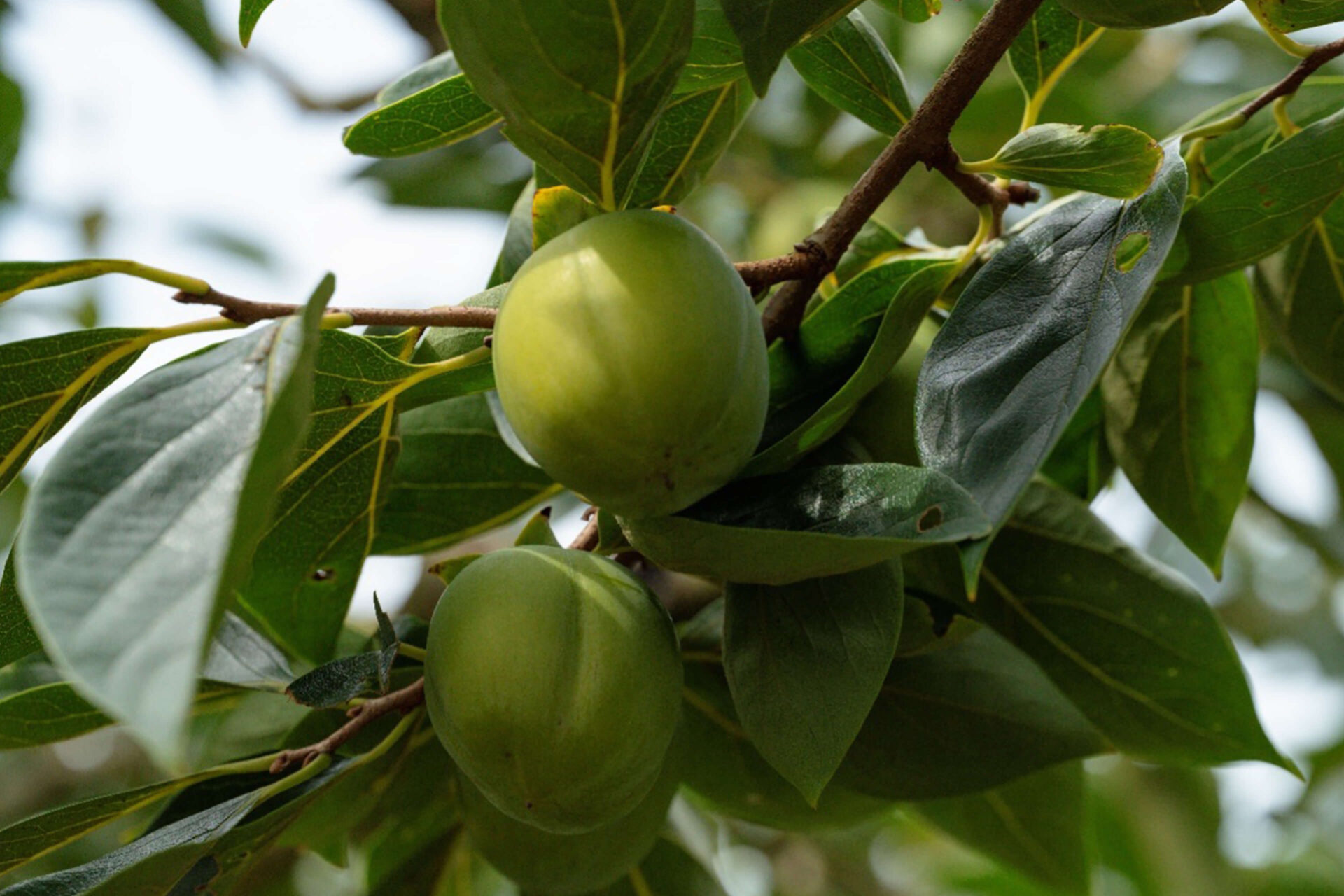
The work is completed when about 20% of the flowers are in bloom. After the natural fruit drop period, growers perform thinning, further selecting the fruits to be grown to full size. They carefully cultivate large, well-shaped fruits, making sure that those selected do not have their bottoms pointing skyward.
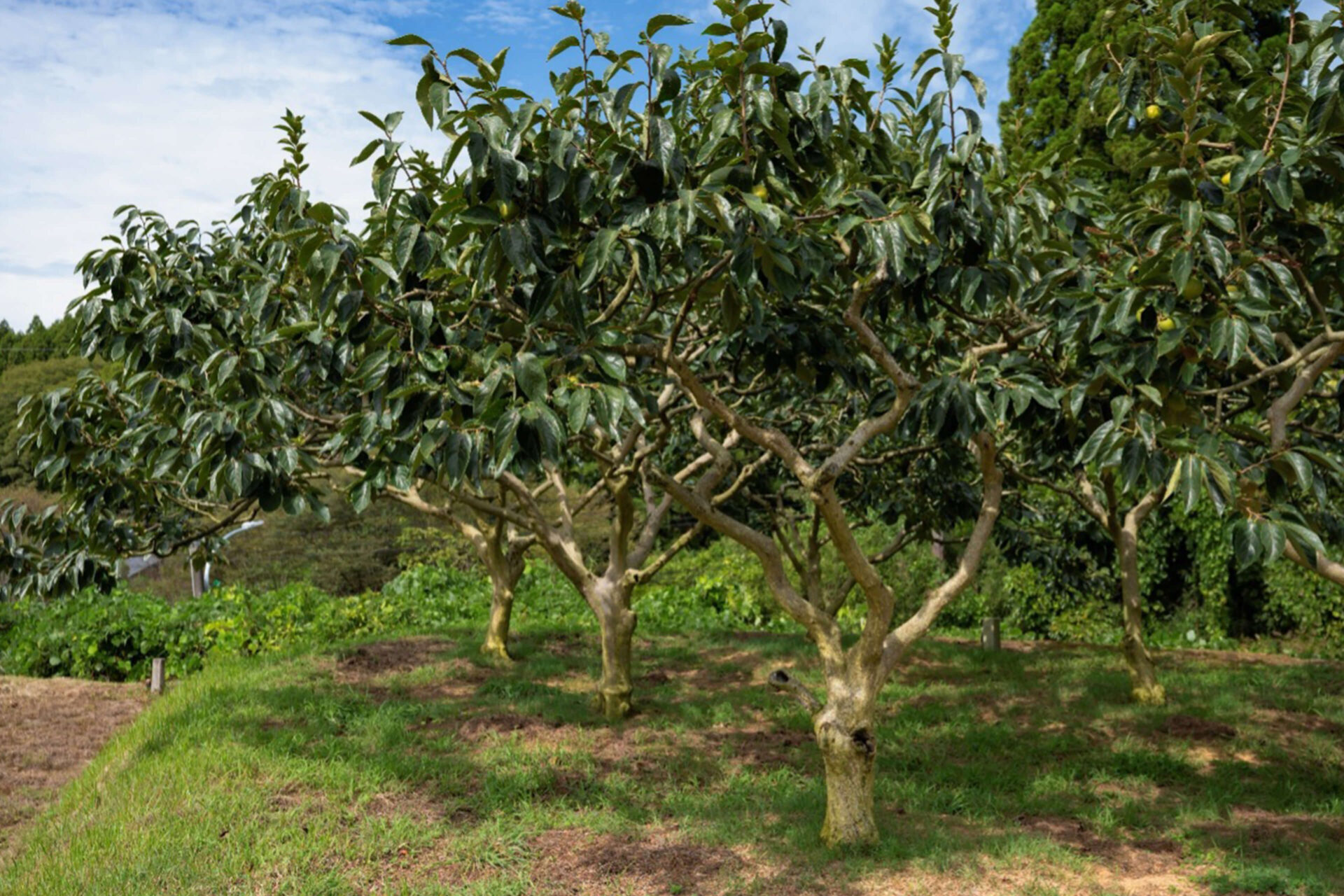
Harvesting begins when the fruit has reached a certain size, its red color is visible, and the area around the calyx turns yellow. The fruit is carefully harvested to avoid any damage.
The Key to Deliciousness: Two Rounds of Drying and Hand Kneading.
The deliciousness of “Korogaki” is determined by the post-harvest process.
After harvesting, the persimmons are peeled and hung in pairs on bamboo rods. They are then placed in a box for sterilization (sulfur fumigation) before entering the first stage of drying. This initial drying process allows moisture to escape from the fruit and typically takes about 10 to 14 days. Fans are used to ensure airflow around the entire fruit, and dehumidifiers help maintain humidity levels below 80%.
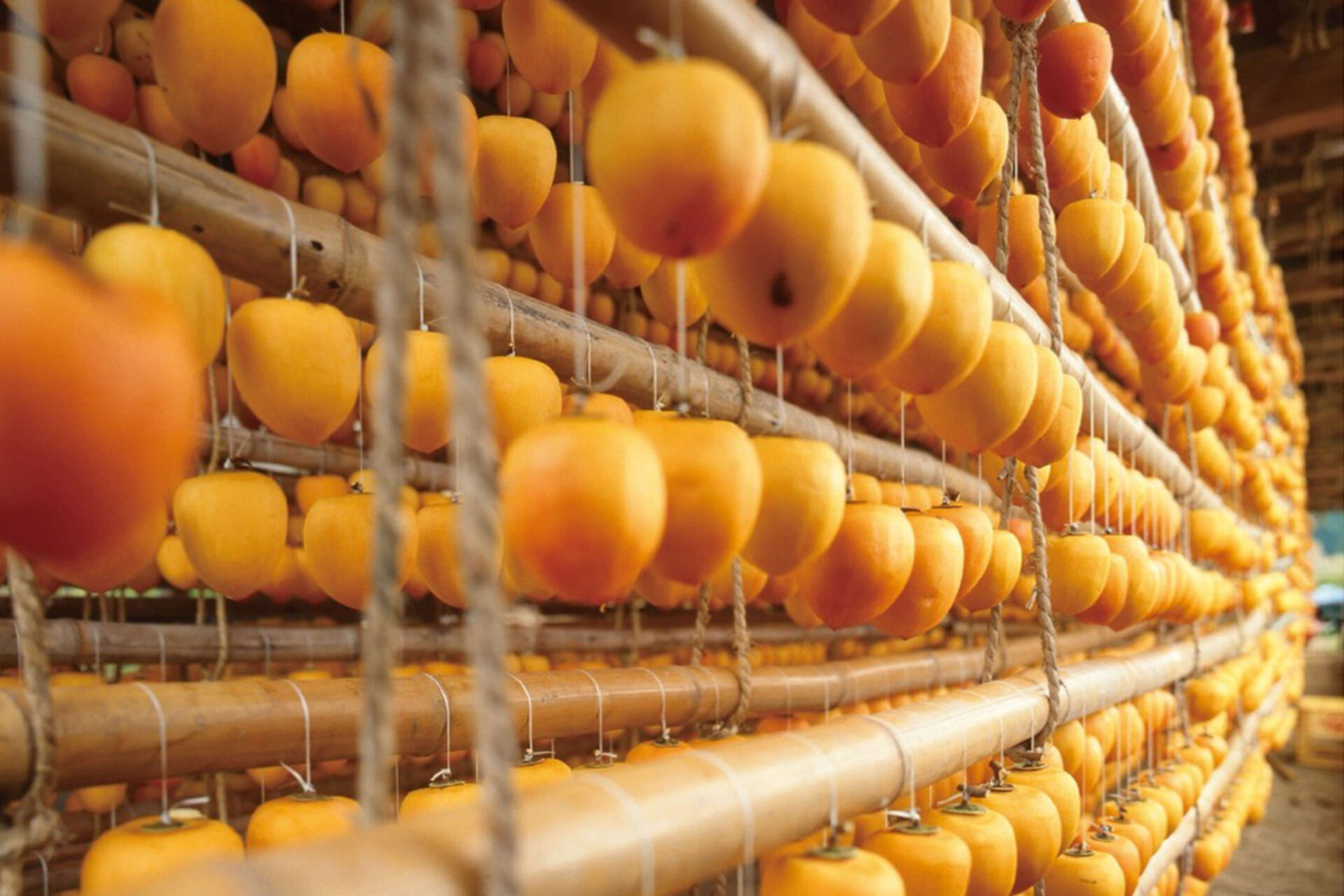
Next comes “temomi,” or hand kneading. Each persimmon is gently massaged by hand. This process draws moisture to the surface, allowing the sugars and other components inside to distribute evenly, enhancing the sweetness when eaten. From this stage through the final drying process, the remaining moisture must be carefully drawn out and fully evaporated to ensure the fruit is thoroughly dried inside without splitting.
Hand kneading is performed twice a week. The fruit starts off firm but eventually softens to the texture of an earlobe.
The key during the first hand kneading is to massage and cut the seed inside the persimmon. Cutting the seed releases the tension in the fruit, and the second kneading shapes the fruit into its final form for shipping. However, if the fruit is kneaded too forcefully, it may break. Since there are both hard and soft fruits, the process is done carefully, with the pressure adjusted as needed.
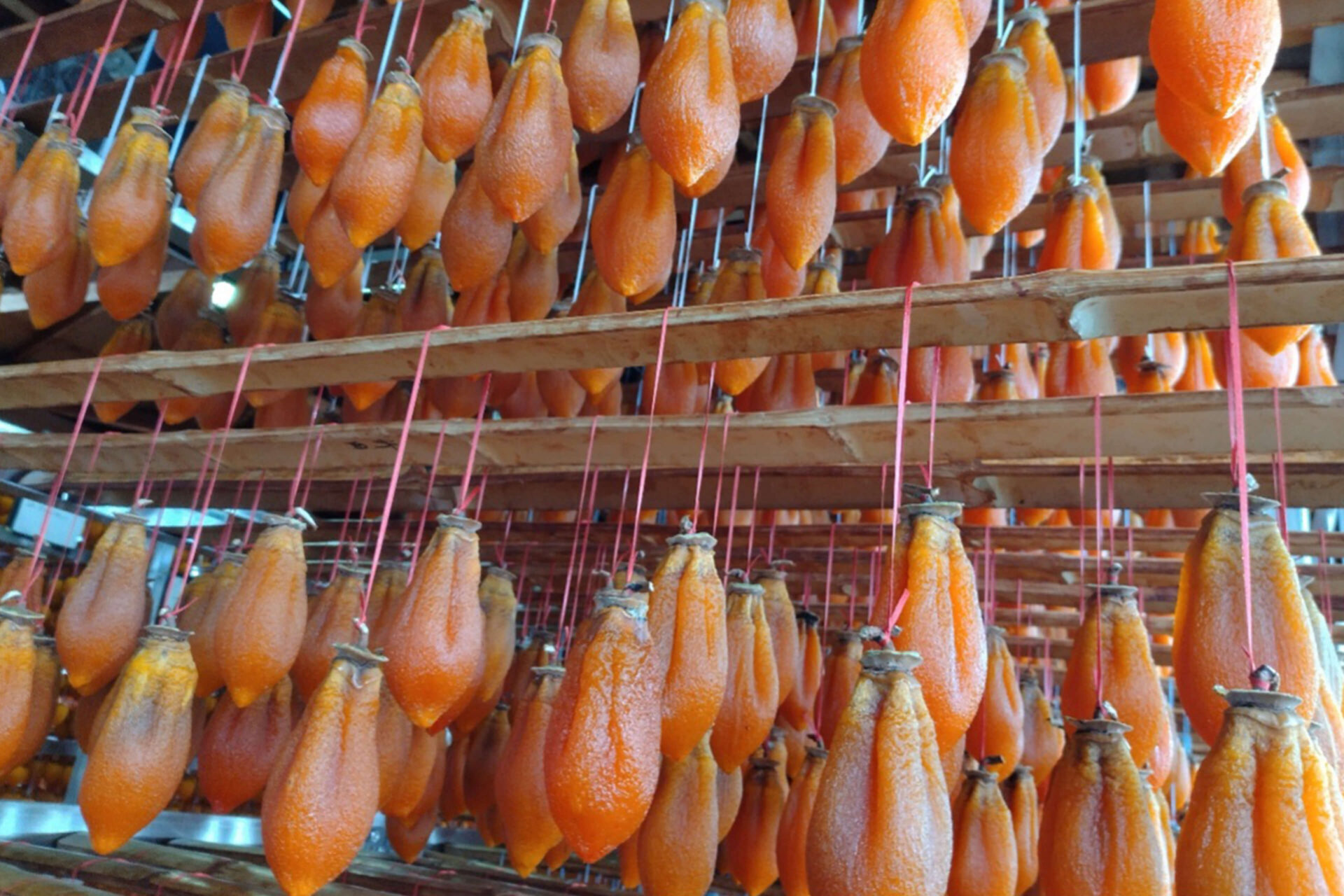
Final Step: The Toughest Part – Second Drying!
After this, the process enters the final drying stage, known as the second drying, which takes about 7 to 9 days.
Mr. Yoshino explains that the amber hue unique to “Korogaki” is achieved during the second drying process. This hue is a sign that the fruit’s interior is thoroughly dried. During this stage, kerosene or electric stoves are used. If the temperature in the drying area is too low, the moisture inside the fruit won’t escape fully; if it’s too high, the fruit may dry out too much and become hard. “Achieving this hue while keeping the fruit soft is an incredibly difficult task,” says Mr. Yoshino.
Since the temperature differs between day and night, it must be adjusted accordingly. Taking advantage of the warm air’s tendency to rise, it’s necessary to alternate the fruit between the upper and lower shelves or place smaller fruit on the lower shelves and larger fruit on the upper ones. Mr. Yoshino laughs, saying that this constant attention causes him to lose several kilograms during this period.
“If the surface is dry but the inside isn’t fully dried, moisture will return to the surface overnight. Once that happens, it’s over. Even if you continue drying, the fruit will never develop that beautiful amber color. The hardest part is determining when the fruit is completely dried inside.”
Thus, each persimmon, out of tens of thousands, is carefully nurtured by the grower. Only those that successfully pass the final hurdle of second drying are shipped.
Once shipped, the persimmons undergo a rigorous inspection at JA and are ultimately released to the market as “Noto Shika Korogaki,” boasting the perfect balance of color, softness, and sweetness.
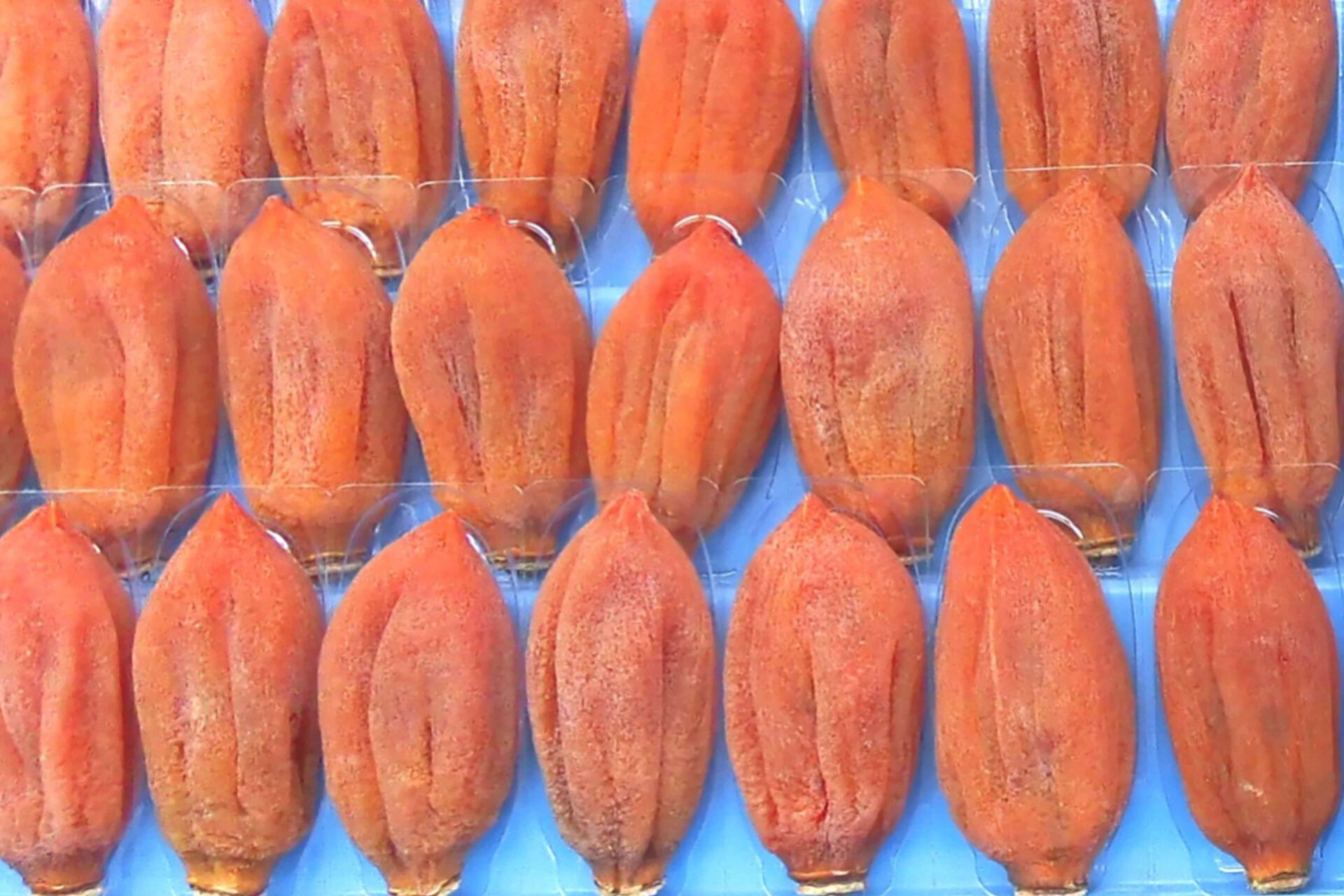
“Korogaki” are sorted into five size categories, ranging from M (34g or more) to 4L (85g or more). The most common sizes are L (41g) and 2L (51g). “Some people may find a whole fruit a bit large to eat at once, but when it’s cut into bite-sized pieces, you’ll be surprised at how easily you can eat several,” says Mr. Yoshino.
The gentle, nostalgic sweetness evokes the peaceful satoyama landscape. It is the result of the grower’s dedicated time and care with each individual fruit.